Hibiscus plants are common flowering plants found in most houses. We get thrilled to witness their vibrant blooms. But, when do they flower, and how long will they last? That is what we will explore in this article.
Hibiscus blooms during mid to late summer, and the flower usually lasts for 1-2 days. The blooming cycle lasts for 3-4 weeks. They also bloom in the fall, but only in regions where the winters are mild. The blooming cycle and the flower lifespan will vary on the variety you have.
After pruning, it takes 2-4 months to produce flowers. If you want to know everything about the blooming of Hibiscus, this guide will help you. Besides, I will share some tips to encourage more blooms.
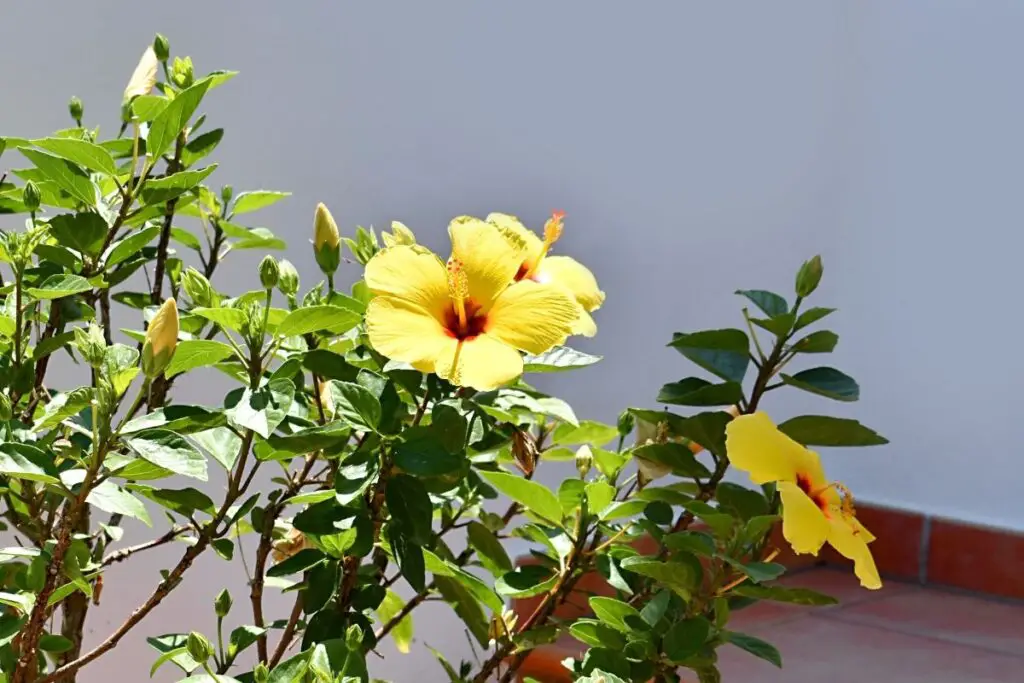
When and how often does the Hibiscus plant bloom?
Generally, the Hibiscus plants bloom in the summers when the weather is warm and the days are long.
The blooming time starts from mid or late spring, when the weather gets warm enough, like the plant’s native land.
Tropical Hibiscus plants have a longer blooming cycle than the hybrids.
The Tropical varieties will bloom year-round, but the Hardy Hibiscus will bloom only in the hot summer months.
The Tropical Hibiscus will also remain green the whole year, but the Hybrids fade and die back to the ground in winters.
There is no specific frequency in flowering.
- Once a bud develops, it flowers, wilts, and falls on the ground. Again, another bud will grow from that place. We can say that it blooms after every 1-2 days.
- It takes almost 8-9 hours for a bud to turn into a full-grown flower.
- The plant will take 2 months to produce any flowers from a cutting.
- If you have pruned the plant recently, the plant will bloom after 2 to 4 months.
Container plants produce flowers more profusely than grounded plants because they get a chance to become root-bound.
A slightly root-bound plant encourages better blooming.
How long does a Hibiscus bloom last?
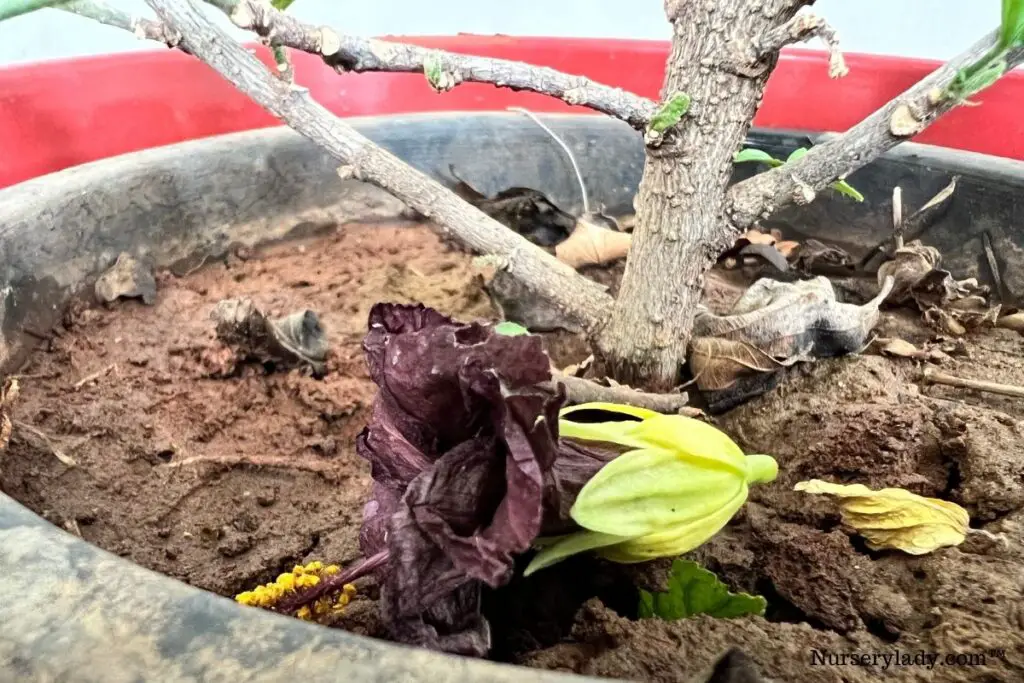
A Hibiscus bloom lasts for only one day, sometimes 2 days mostly.
The flower bud opens in the morning, begins to wilt in the afternoon, and drops by the evening.
After falling off, a bud appears again and develops into a flower.
Though the blooming cycle of Tropical Hibiscus is year-round, the flowers last for only 1-2 days.
On the other hand, the Hybrids are designed to have a little more lifespan than the tropical varieties.
But, the Hardy varieties don’t last for more than 2-3 days.
Will Hibiscus bloom the entire year?
As mentioned earlier, the Hibiscus has two varieties, and both will bloom.
Tropical Hibiscus grows throughout the year.
So, you don’t need to worry about their coming back.
Once one flower falls off the plant after drying, it will quickly grow another flower bud and bloom.
Both the outdoor and indoor plants can be encouraged to bloom.
On the contrary, the Hardy Hibiscus plants flower only during the hot months.
That means they will not flower once the winter arrives and will come back when the weather starts warming up in the spring.
The blooming cycle repeats from the early spring to late fall in Hardy Hibiscus.
Though the Hardy Hibiscus don’t grow year-round like the Tropical Hibiscus, the colorful blooms the hybrids produce are worth the wait.
Why don’t Hibiscus bloom?
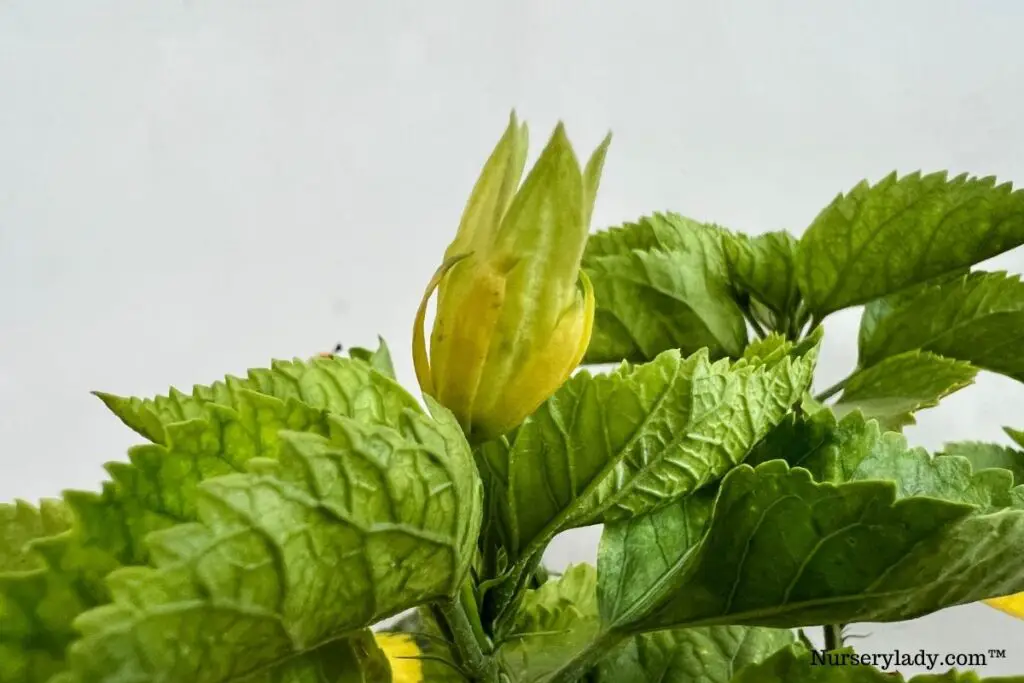
Generally, it is surprising to see the Hibiscus not blooming during their growing months.
It means the plant is facing some problems.
However, Hibiscus not flowering in winter is normal.
One common problem is the lack of sunlight.
Without enough sunlight, the plant cannot use its energy to its full potential and thus, fail to flower properly.
Other reasons include improper watering, poor fertilizing, or heavy pruning.
You must give them enough water, use a fertilizer high in potassium and low in nitrogen and phosphorus, and don’t prune during the growing months.
Even if you prune, it should be light pruning in the early spring to encourage new growth and flowering.
Looking for gardening supplies? We have tested 100's of products before recommending them to you guys. Check out our best pick below:
| Image | Gardening Supplies | Best Price? |
|---|---|---|
 Top
Top Top
Top | Raised Garden Bed Kit | Check On Amazon |
 | XLUX Soil Moisture Meter, Plant Water Monitor, Soil Hygrometer Sensor for Gardening, Farming, Indoor and Outdoor Plants, No Batteries Required | No Results |
 Top
Top Top
Top | 82 Pcs Garden Tools Set and Extra Succulent Tools Set | Check On Amazon |
 | Joeys Garden Expandable Garden Hose with 8 Function Hose Nozzle, Lightweight Anti-Kink Flexible Garden Hoses, Extra Strength Fabric with Double Latex Core, (50 FT, Black) | No Results |
 Top
Top Top
Top | Dual Chamber Compost Tumbler | Check On Amazon |
 Top
Top Top
Top | Sunnyglade Plant Stakes | Check On Amazon |
 Top
Top Top
Top | Organic Cold Pressed Neem Seed Oil | Check On Amazon |
 Top
Top Top
Top | Mighty Mint Gallon :-Insect and Pest Control Peppermint Oil | Check On Amazon |
 Top
Top Top
Top | Scotts DiseaseEx Lawn Fungicide | Check On Amazon |
 Top
Top Top
Top | Jacks Classic 20-20-20 All Purpose Fertilizer | Check On Amazon |
 Top
Top Top
Top | 30,000 Seeds Pollinator Attracting Wildflower Mixture | Check On Amazon |
 Top
Top Top
Top | Survival Vegetable Seeds Garden Kit-Over 16,000 Seeds | Check On Amazon |
How to keep Hibiscus blooming?
Hibiscus will need sufficient sunlight, water, fertilizer, ideal container, temperature, and humidity for abundant blooming.
Pruning and deadheading also play a major role.
Water and light are the two essential factors that need monitoring the whole year.
Sunlight intensity and effects of shade
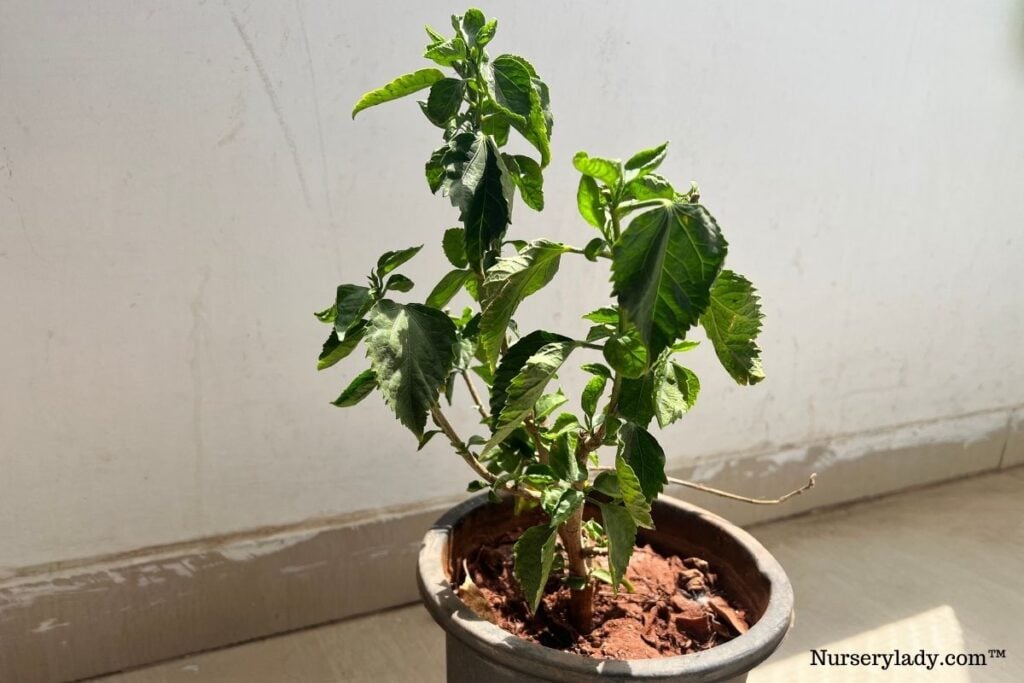
Hibiscus plants grow best and bloom when they receive 6-8 hours of sunlight.
Sufficient sunlight helps them to use their energy fully to encourage further flowering.
If you worry about sunburn, let them have 2-3 hours of direct sunlight in the morning.
For the rest of the day, let them have filtered sunlight.
If they receive less than 2 hours of direct sunlight, you may find them fine and green, but there won’t be any flowers in the plants.
It is commonly visible in the Hibiscus houseplants.
However, you can still inspire your indoor plant to bloom if they get a minimum of 2-3 hours of direct sunlight.
Avoid fully dim areas.
Shaded by houses, fences, garages, or walls reduces photosynthetically active radiation or PAR.
Due to this, the plant fails to receive the light used for proper photosynthesis.
However, the light received through the canopy of the trees can at least help in proper photosynthesis.
Good light intensity increases the photosynthetic rate, which the plant needs for flowering.
Also read: How Much Light Does A Hibiscus Plant Need? (What Kind, How Much & More)
Watering adequately encourages flowering.
Following a proper watering routine is easy and tricky at the same time.
The goal is to give the plant enough water to prevent the soil from drying.
Once the soil begins to stay dry for a long time, the blooming process ceases.
When the soil starts to dry out, the leaves will wilt.
This means the plant is closing down to preserve the energy needed for flowering.
To stop this, you should provide the plant with enough water.
It will prevent them from shutting down and using full energy to grow flowers.
Water the plant deeply and thoroughly.
If it’s in a pot, water it until the excess begins to drain out.
In the summers, water regularly.
Sometimes, it might require 2-3 times per day.
Apply a layer of mulch to preserve the moisture and prevent quick evaporation.
Also read: How To Water Hibiscus Plant? (How Much, How Often & More)
Fertilizing can increase blooming incredibly.
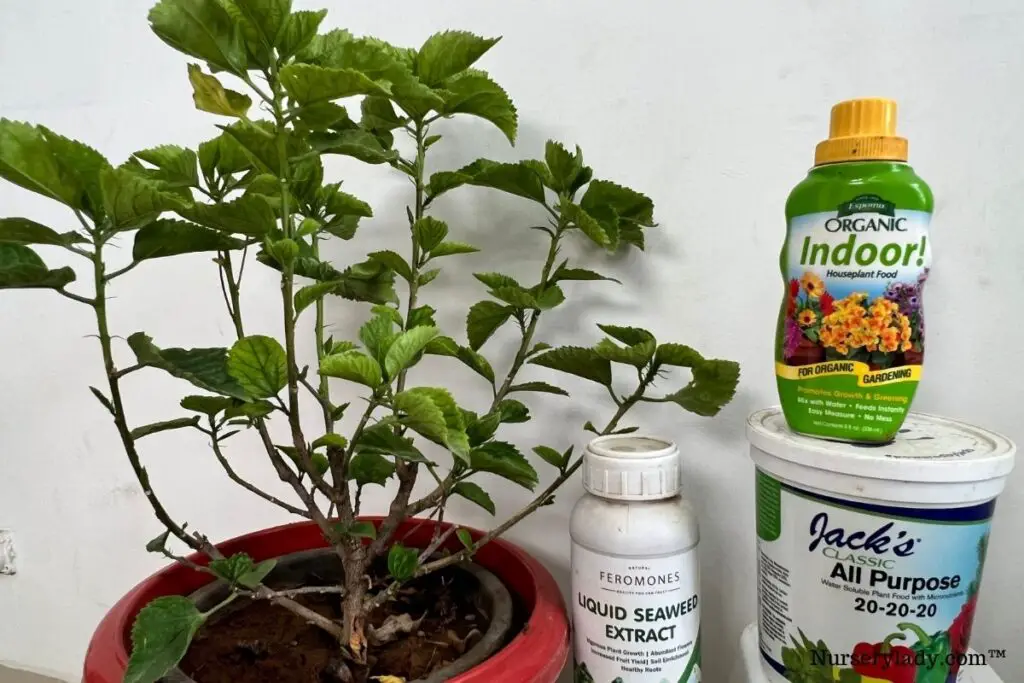
Hibiscus requires fertilizing but don’t get tempted and use highly blooming plant food.
Use the fertilizer suitable for Hibiscus.
Flower-boosting plant food can block the other nutrients and stop the plant from flowering.
You must use the right fertilizer at the right time with the correct amount and frequency.
A good fertilizer for Hibiscus is the one with average nitrogen, low phosphorus, and high potassium, for example, having an NPK value of 17-5-24.
The best time to fertilize is during the spring and summer.
Apply them once a week from April through September.
Though both time-release and liquid fertilizers work well, the liquids can give the plant nutrients instantly for using it in flowering.
Also read: What Is A Good Fertilizer For Hibiscus Plants? (Ideal Ratio+Best Pick)
The size of the planter can impact flowering.
Many gardeners grow Tropical Hibiscus in containers to bring them inside when the winter arrives.
If you live in a colder climate and grow Hibiscus in containers, the pot size should be according to the size of the plant.
A semi root bound plant is good for flowering.
When the roots fail to get enough space to grow, the plant concentrates and uses its energy on blooming.
As a result, they begin to flower profusely.
But extremely root-bound plants will make the plant and its roots exhausted because the oxygen level decreases due to lack of space.
It will affect the plant’s overall development.
Check for signs like roots coming out of drainage holes and repot the plant.
Also read: What Kind Of Pot Is Best For Hibiscus? (Size, Material & More)
Avoid heavy pruning
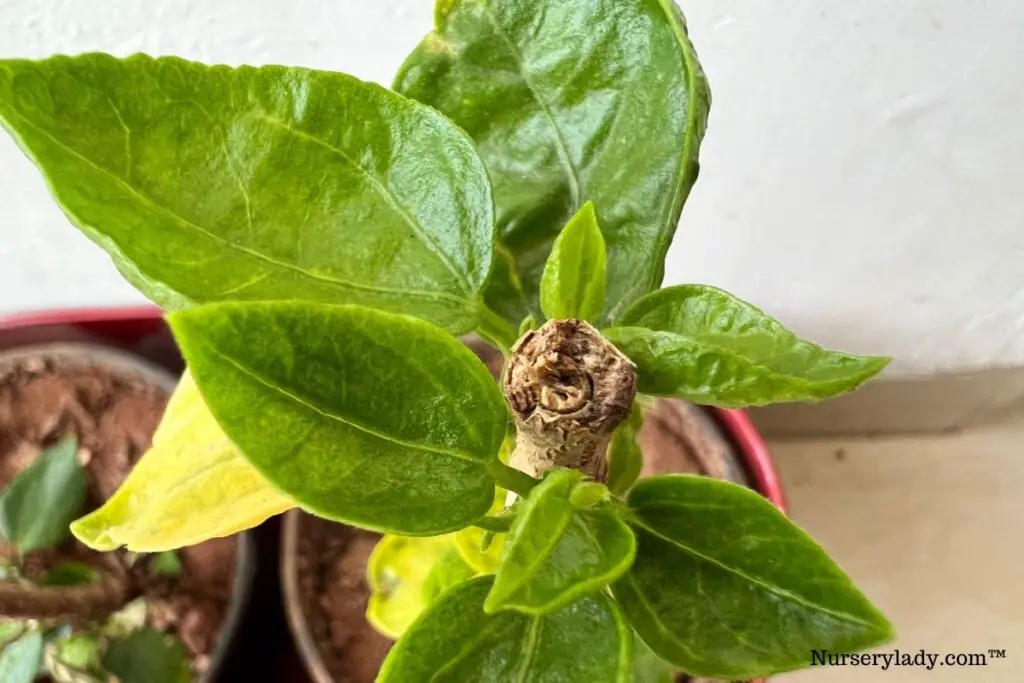
A common mistake every gardener make is, performing heavy pruning at the beginning of the growing season.
If you do this, your plant will have no blooms, or they will bloom in the autumn.
When winter arrives after the fall, the plant will drop the flowers, and there will be again no flowers.
However, that doesn’t mean you should not prune.
You can prune lightly by removing the old wilted growths and damaged stems.
You should prune only 20-30% at the beginning of the spring.
It encourages the plant to grow new stems and profuse blooming from them.
Is deadheading needed?
Deadheading means removing spent flowers to prevent the plant from growing seeds.
It influences the plant to focus on flowering.
However, it is not a crucial part of any Hibiscus varieties.
Hibiscus plants can clean themselves up by dropping the flower on their own.
After that, the place gets replaced by a new flower bud.
Removing the spent flower reduces the lifespan of flowering.
It prevents the plant from blooming in the late months.
Foliar spray with Epsom salt
Epsom salt works as a great organic fertilizer for Hibiscus.
It can improve flowering and the overall health of the plant.
To use this as a foliar spray, mix 1 teaspoon of salt with 1 liter of water.
Shake well and spray it on the leaves.
It gives the plant enough magnesium that further helps in good chlorophyll.
It improves flowering, leaf color, and photosynthesis.
Temperate and humidity
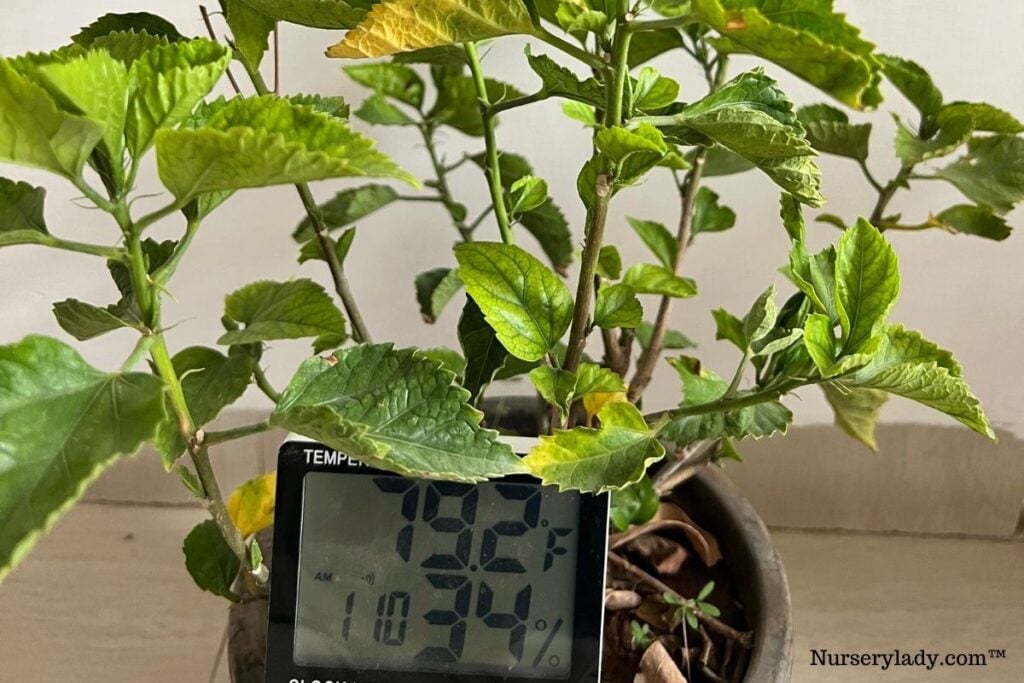
The adequate temperature for profuse flowering ranges around between 60-75°F.
It should not dip below 55°F.
The plant can receive this temperature throughout the year if you live in warmer climates or grow Hibiscus indoors, especially the tropical ones.
Such a warm temperature will make the plant realize that it is in its native land.
It will encourage the plant to bloom frequently, and the cycle will last longer.
However, you cannot do anything for the outdoor plants in winter.
They will become dormant and die to the ground, especially the Hardy Hibiscus variety.
Humidity also plays a vital role in flowering.
Low humidity can result in bud drop.
So, maintain a humidity of around 60-70% for abundant blooming.
Indoor humidity will get adjusted with humidifiers, pebble trays, and relocating to the bathroom.
For outdoor humidity:
- Add a thick layer of mulch, around 8-inches.
- Install misting system.
- Keep water trays around the plant.
- Keep some potted plants close to the Hibiscus.
- Create levels for the dewdrops to fall over the Hibiscus and increase humidity.
- Generally, you can take these steps anytime, but take more initiative during the winter.
Also read:
- Do Hibiscus Like To Be Misted? (+Humidity Requirements)
- Can Hibiscus Tolerate Cold Weather? (+Winter Care)
- Hibiscus Temperature Tolerance: Ideal Range+USDA Zones
Check for pests and diseases.
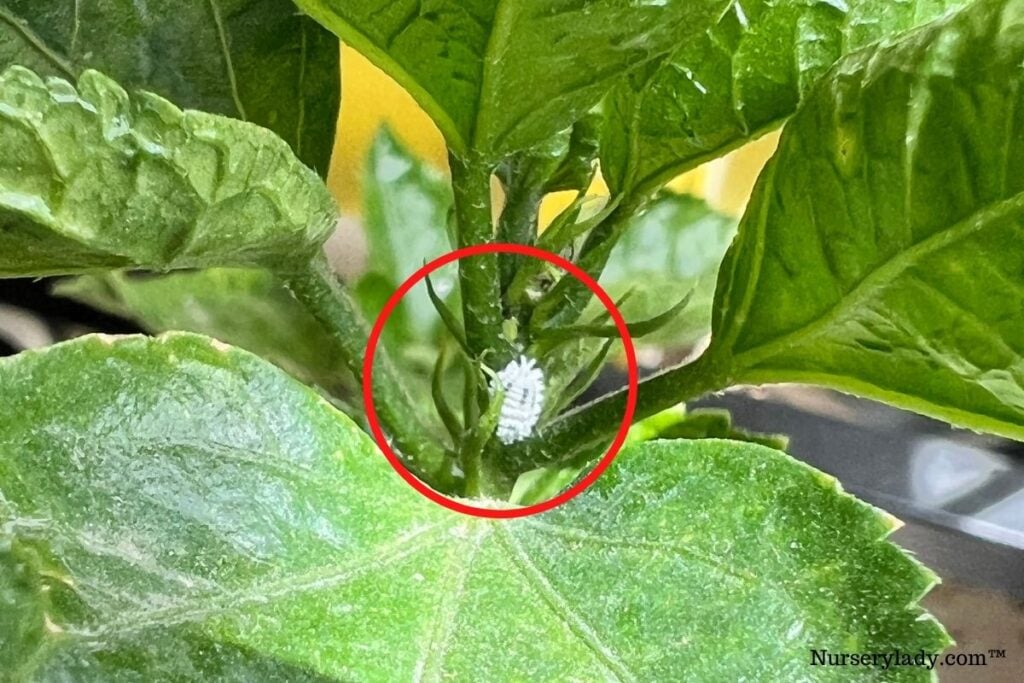
There might be some problems if the Hibiscus flowers die before blooming or don’t last half the day.
Hibiscus can be attacked by several pests, including aphids, mealybugs, thrips, scales, and whiteflies.
If your plant is dropping flowers unexpectedly before time with holes in it, the plant is infected.
You have to check the plant, especially both sides of the leaves.
You can use Neem oil spray regularly until the problem gets resolved.
Once the problem is solved, spray neem oil once a month or every 15 days.
It will prevent further bug attacks and fungal diseases.
It will also increase the humidity to some extent.
You can choose a mixture that contains acephate, imidacloprid, and disyston.
It will not only prevent infection but also improve the plant’s health.
Final thoughts
There is no specific blooming period for the Tropical Hibiscus plants because they can flower the whole year if they get the ideal conditions.
The Hardy Hibiscus will bloom only during the warm and hot temperatures of the year, which are spring and summer.
However, the plant is worth the wait as you can witness colorful blooms that will brighten up your garden in spring. The Tropical Hibiscus blooms will last for only a day or two. Although the Hardy or Hybrid Hibiscus plants are bred to last longer, they live for 2-3 days.
If you follow the tips, I shared for encouraging continuous blooms, you will see frequent flowers and be rewarded with a little longer blooming cycle from your plant.
Reference: Wikipedia, ASPCA, Louisiana State University Agricultural Center, American Society for Horticultural Science, Tropical Hibiscus by Texas A&M University, Sciencedirect.
